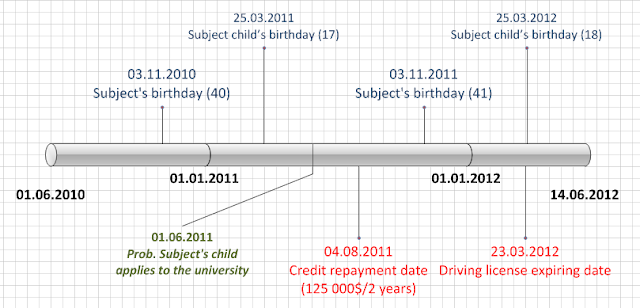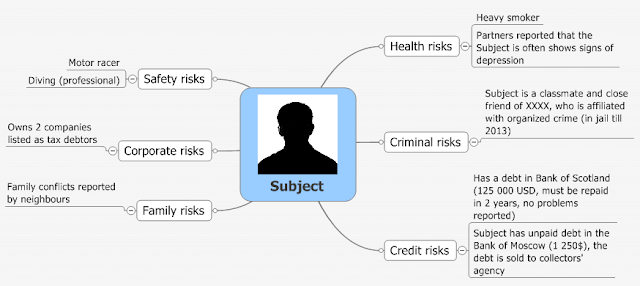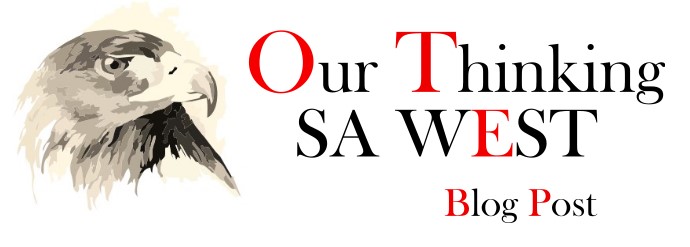Forecasting the Future: Human Due Diligence
Due diligence projects are about the future, not about the past. Sure, it’s nice to know that the subject individual was reliable, wealthy, and trustworthy in the past; it’s Important to be sure that he had no links to criminals and that he hadn’t been involved in fraudulent activity years ago. If there’s anything important in subject’s past and present – we should know.
To keep telling the truth, starting business relationships with the individual we’d like to be sure whether he’ll be reliable and trustworthy in 3, 5 or may be even 10 years from now. Unfortunately, clients and vendors often forget about this stage, especially when there’re several levels of management between the client and the decision-maker. The budget also can make a big difference.
Below I will show you very basic instruments of forecasting that you can use when the data on subject’s past is already collected and you have the report (profile) of the individual.
Undoubtfully, these instruments are simple and easy to use, but they cover 30-40% of the job that must be done before approaching the decision maker with a third party human due diligence report.
Matters to think about when you try to predict subject’s future:
- Goals and plans of the individual
- Individual’s best practices
- Risks of the individual (not related to the business)
- Individuals’ timing
- Goals and plans of the individual
- Individual’s best practices
- Risks of the individual (not related to the business)
- Individuals’ timing
Let’s start with making a simple timeline.
Individuals’ timing
In human due diligence report, there’re tons of data about subject’s probable future.
On many occasions you don’t need going any deeper and search for new pieces of information. This task is almost purely analytical.
You already know:
- When he will celebrate his birthdays
- When his children will go to school
- When he’ll have to update his driver’s license
- When he will have to repay his debts
- When he will probably resign
- And many other facts of the probable future life of the individual

On the scheme above I mentioned only main milestones, but it is reasonable to add Subject’s sibling and parents birthdays, passport expiring dates etc.
Subject’s risks
I would recommend focusing on a set of very basic risks.
- Healths risk – don’t go very deep. It’s enough to know that the subject pays attention to his health, do sports/ smokes, has diabet, etc
- Criminal risks – relations with criminals. Don’t forget that we are taking into consideration only links that can influence Subject’s decisions in the future.
- Credit risks – unpaid or huge debts. No matter if these debts are overdue or not.
- Family risks – divorce, fornication etc.
- Corporate risks – only if the subject is a business owner

When these risks are identified, it is reasonable to proceed to
Subject’s Best Practices
At this step we must try to understand behavioral patterns of the Subject. This time we must ask ourselves many questions about the subject and unfortunately the list of these questions can’t be unified.
In general I think that best practices can be divided into several sections:
- Finance management practices (how the Subject deals with his personal or corporate finances)
- Family & friends relations management practices (how he treats his relatives, friends, lovers etc.)
- Corporate management practices (how the Subject manages his companies)
- Personal development practices (how the Subject manages his personal skills, health, assets etc.)
It is reasonable to mention ones again that the aim is not to dig the data but to identify behavioral patterns of the Subject.
We should know how he used to behave himself and how he may react to future challenges.
For example, for finance management practices it would be enough if you make the following statement based on initial report:
FINANCIES: When the Subject doesn’t have enough money, he takes banking loan. He doesn’t ask his friends or business partners to help him and prefer keeping his problems to himself. He is said to be a bad debtor for personal loans, but he is strict in repaying corporate debts.
In 2011 he will have to earn extra money for his child’s application to the university. We assume that he will have to ask foreign bank for a loan, because Russian banks will refuse to give him money.
In brief Best Practices section, you will have 2-3 pages with the data that really meets decision-makers’ needs.
Subject’s Goals and Targets
There’re many instruments helping in setting goals and targets. Mostly these instruments are for corporate use only, but they can be easily adjusted to personal needs.
Depending on the subject and the project I prefer good old days Balanced Scorecard or work with scenario analysis. Both methodologies are commonly known, there’re many appropriate courses and lectures available on-line.
What you will have to do is to “reshape” these instruments a little to help you in projecting your knowledge of the subject, his plans, desires, capabilities on the map.
And what’s next?
You have probably mentioned that even basic instruments of forecasting require reshaping of the way we address subjects of our researches. We shouldn’t just “find and connect dots” – this methodology is good for corporate investigations, but it is not enough if we do human due diligence research.
In my opinion we must try to understand the subject and make our mind about his behavior in the future. Otherwise there’s no difference between researches and common investigations / profiling.
If the subject and the client live in the same country and belong to the same culture, forecasting is rather simple task which requires nothing but basic knowledge of intelligence analysis. Some decision-makers even prefer conducting forecasting by themselves.
Problems start when there’re serious cultural differences between the client and the subject (the origin of the researcher is not so important). Using his cultural narratives, the decision-maker can make dramatical mistakes analyzing report on individual living in different context.
It is our responsibility to do our best in saving money, nerves and time of our clients. That’s why I strongly believe that without forecasting section the human due diligence report is incomplete.
If you have any questions about SA WEST human due diligence services get in touch with our team members.


